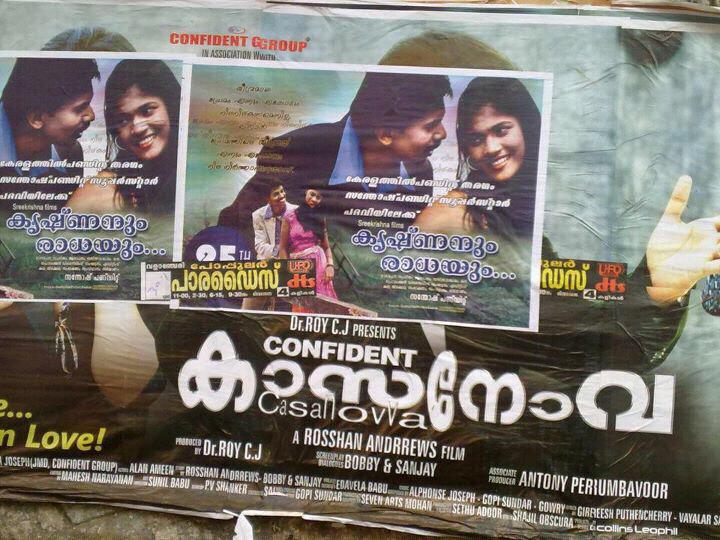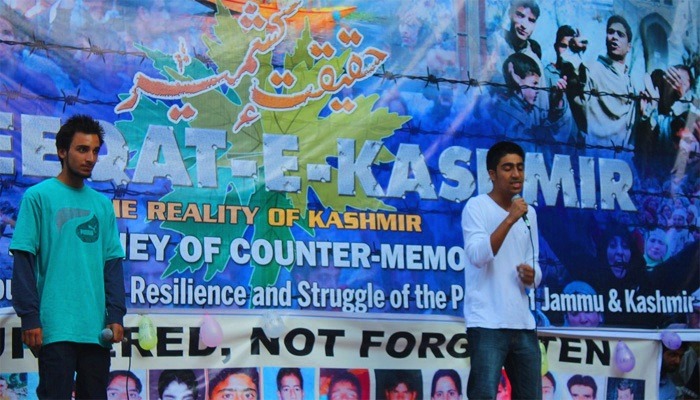Fellowships
-
‘Lahore is a lot like Delhi’: Digital Discourse on Histories and Places across the Border
I am interested in seeking answers for the following questions: Why does it matter for these younger generations to document and, in so doing, relate to memories of Partition? What is the impact of this desire to understand Partition on modern Indian/Pakistani/’South Asian’ identity? What is the impact of the digital space and new media technologies on our relationship with history? How do we imagine the ‘lost’ spaces and times of our ancestors?
-
Decoding the Big Indian Sting
I revisit the inaugural moment of Tehelka’s Operation Westend. Journalists Mathew Samuels and Anirudh Bahal, posing as arms dealers from a fictitious London-based company called West End International hawked a non-existent Defense product called ‘hand-held thermal cameras’ to the Indian government by bribing several ministers and top-level bureaucrats… This post also contains excerpts of interviews conducted with … [technicians] to outline common technical practices the ‘industry’ follows in carefully constructing and packaging sting operations.
-
Alternative Media: An Agent and of Change in Kashmir
In conflicts like one in Kashmir, news and information gets buried due to the pressure from conflicting parties, collusion of the news sources with the various agencies or simply because of the lack of will to explore. With the social media, the chances of the burial of the information reduce…
-
On that small mobile phone shop in your street corner
I began fieldwork in selected market areas … of Bangalore to observe the mobile phone usage of vegetable vendors, street peddlers etc. I regularly visit these streets … and build rapport with potential informants. I document my observations and follow the leads that I gather when speaking to these users about the types of phones they use, the peripherals and accessories they buy along with the phone, the costs they pay for accessing the Internet, their modes of consumption of media content etc.
-
The Camera Membrane
The Image physically remained the product of a chemical reaction, being non-reversible in character. To reproduce it was also the act of eroding it, and it was to be distributed along with a story in the print, very often claimed to be a push medium. Digital photography made the process of image making reversible. The Image was now generated on a sensor instead of a film, was now an array of RGB values ready to be copied like any other data file, to be infinitely replicated, to be analyzed, post-processed, and to be reconstructed from data.
-
Santosh Pandit: Negative Publicity and Durablity of the “Superstar of the Poor”
Till the release of the song sequence on YouTube, the name Pandit was unknown even to the most avid film enthusiasts in Kozhikode, the place from where he hails. Except a few who knew him as an enthusiastic man in his forties who was struck by the cinema-bug and attempted to make a few albums, no one had any clear memory of his talents exhibited otherwise. But, in no time he mobilized a huge fan following and a strong virtual presence through fan pages…
-
Postmemories and the Digital Afterlives of Partition
The digital space is a significant medium through which discourses on Partition, and thereby a larger South Asian identity, are enacted. This is in many ways an attempt to move from the amnesias and post-amnesias of the past by those who are both sufficiently distant from the actual event and yet strongly feel that they have a direct stake in understanding Partition and its repercussions… My focus is not as much on the memories of those who directly experienced Partition (about which there is a vast and fascinating literature), as it is on the postmemories of new generations who are spearheading digital archives, oral history projects and online peace initiatives. I am interested in the ways in which new media and communication technologies have shaped the postmemories of the post-Partition generations and the virtual ways in which they choose to remember, recover and engage with the past of their families and nations.
-
Rural Social Media and ‘Timepass’: Theorising Non-Instrumentality
[W]e first need a language to entertain the thought of entertainment as a valid if not serious use of technology which is worth studying… [M]y preliminary findings have convinced me that the potential banality of terms like development, e-governance, digital literacy, technology adoption, innovation and even Jugaad, does not allow one to grasp the wider cosmology in which digital media is being appropriated in the village.
-
Hashtag #StingOp: Truth, Low-Resolution and Post Social-Media Transparency
This project begins by considering the various (ever-mutating) physiognomies that have been deployed for the manufacturing of these video documents. It sketches the techno-material history of the production of the sting – from the changing optical devices used beginning with the large camcorders concealed in satchels used during earlier stings like Operation Westend, Gujarat riot stings etc. right up to the latest high-resolution spy-cams disguised in eye-glasses, diaries, calendars, ear plugs and various other innocuous seeming subjects to the complex processes in post-production. I am deeply interested in the careful technical packaging of the sting video … [and] the various post-production effects often deployed to accentuate the sense of authenticity/truth to the sting footage.
-
Aims and Faces behind Kashmir’s Alternative Media
The saying, “In war, truth is the first casualty,” holds true to Kashmir. There are multiple versions of a single event and there is no absolute truth. Also, being a disputed conflict zone, there is limited space for freedom of speech and freedom to express ideas. Thus the rise of alternative media is significant. Hence, it is important to reveal the story behind its rise and the story of people who gave birth to it and what they aim. It is important to put into perspective why these activists chose this path.







